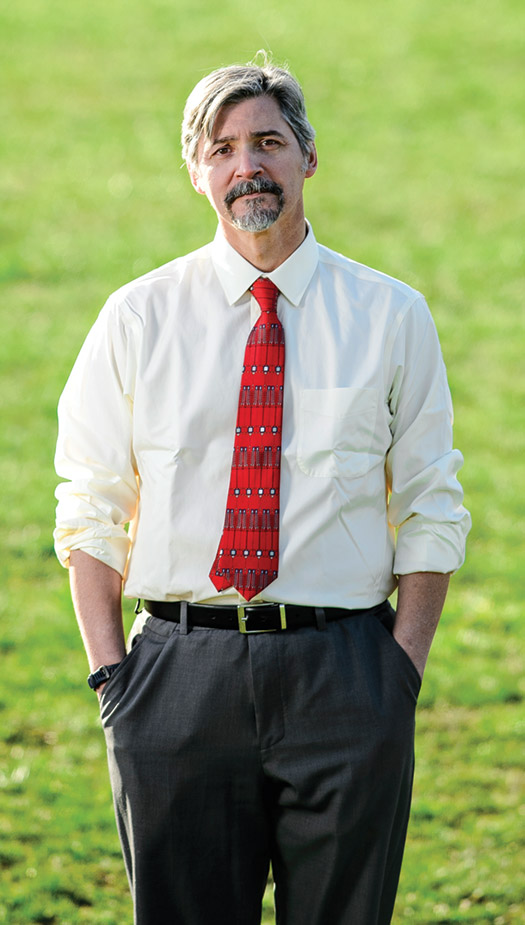Paul Robbins ’89
The grass may be greener on the other side of the fence. But is that a good thing? By surface area, lawns — including golf courses — could be considered the single largest irrigated crop in the United States. Paul Robbins, director of the Nelson Institute for Environmental Studies and author of Lawn People: How Grasses, Weeds, and Chemicals Make Us Who We Are, has studied America’s fixation with them — and the ecological fallout.
When did you first become interested in people’s attitudes about their lawns?
It was when I first bought a house — 1999 — in Clintonville (Ohio). My neighbor leaned over my fence one day and said, “What are you going to do about that creeping charlie?” I realized it’s a common property problem. If people let their lawns go in one part of the neighborhood, the other part of the neighborhood gets upset about it.
Where did the idea of a lawn being a symbol of a well-kept neighborhood get started?
Lawns don’t actually appear in a big way in the United States until the 1950s. It’s an old idea that well-cultivated, tidy landscapes make for tidy citizens, but it lives on. People would tell me when we’d interview them, “You know what’s going on inside a house by what you see outside the house.”
What are the main ecological effects of the quest for the perfect lawn?
People use [chemicals] in quantities ten times more per square area in a lawn than they do out in the countryside. And so the impacts are pretty high; you see these chemicals in urban waterways. The big [impact] now is water demand. In Las Vegas, they’re buying back lawns. In Los Angeles, the city pays you per square yard that you surrender of your yard.
Why do people still try to achieve this ideal?
We surveyed people all over the country. We asked them whether they think lawn chemicals are bad for water quality, for their children, for their health. People who say they use lawn chemicals are more likely to say that they’re bad than people who don’t use lawn chemicals. If they had a choice, they would do something else, [but] they feel like their neighbors will look down on them, their property values will fall, it’ll be a sign of being a bad community member.
Short of letting a residential lawn revert to a natural prairie, how can people reduce the environmental impact?
Have your lawn where your kids can play soccer, but don’t worry as much about the weeds and dandelions. Relax your aesthetic and appreciate the diversity.
Interview conducted, edited, and condensed by Greg Bump.
Published in the Summer 2016 issue



Comments
No comments posted yet.